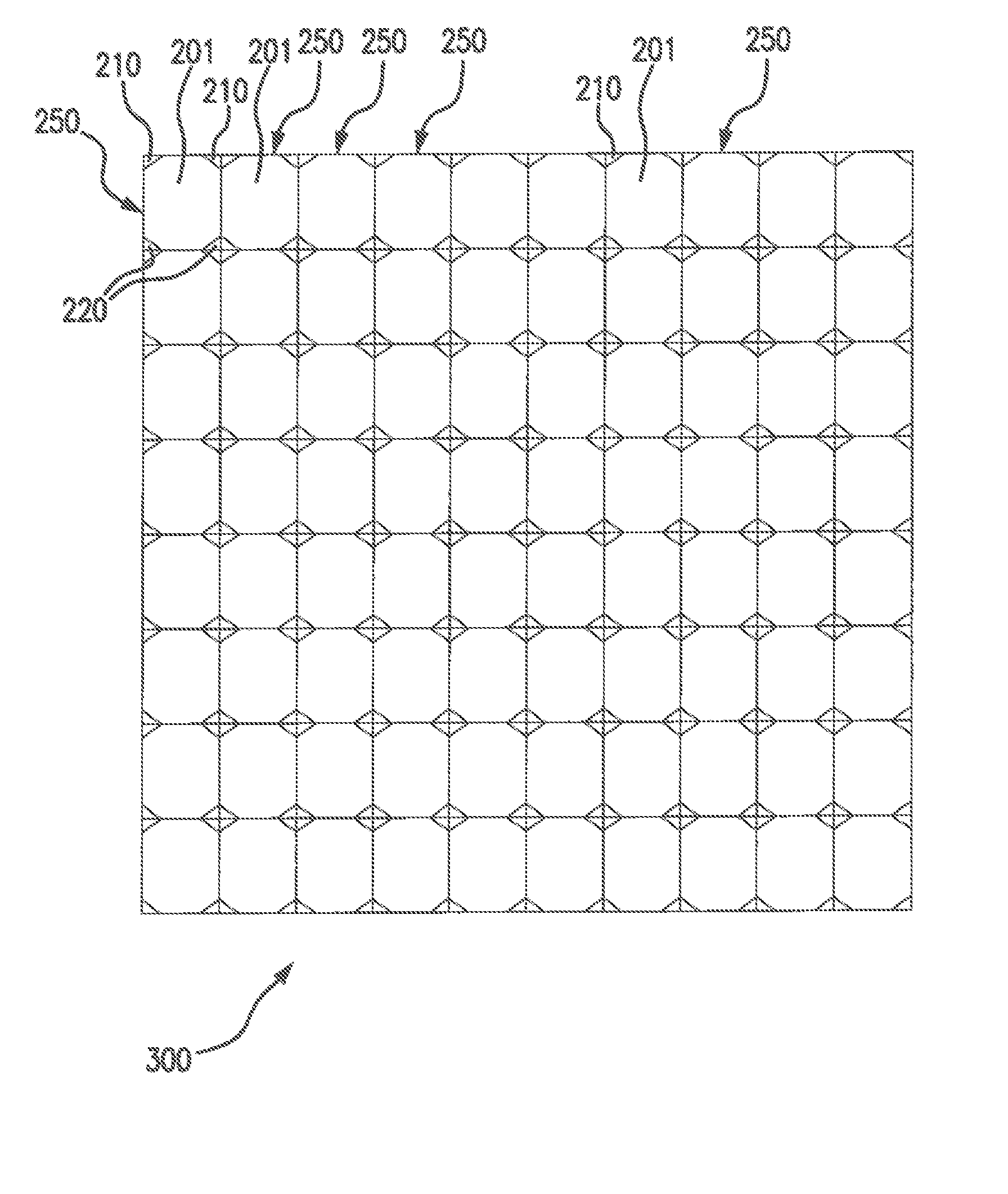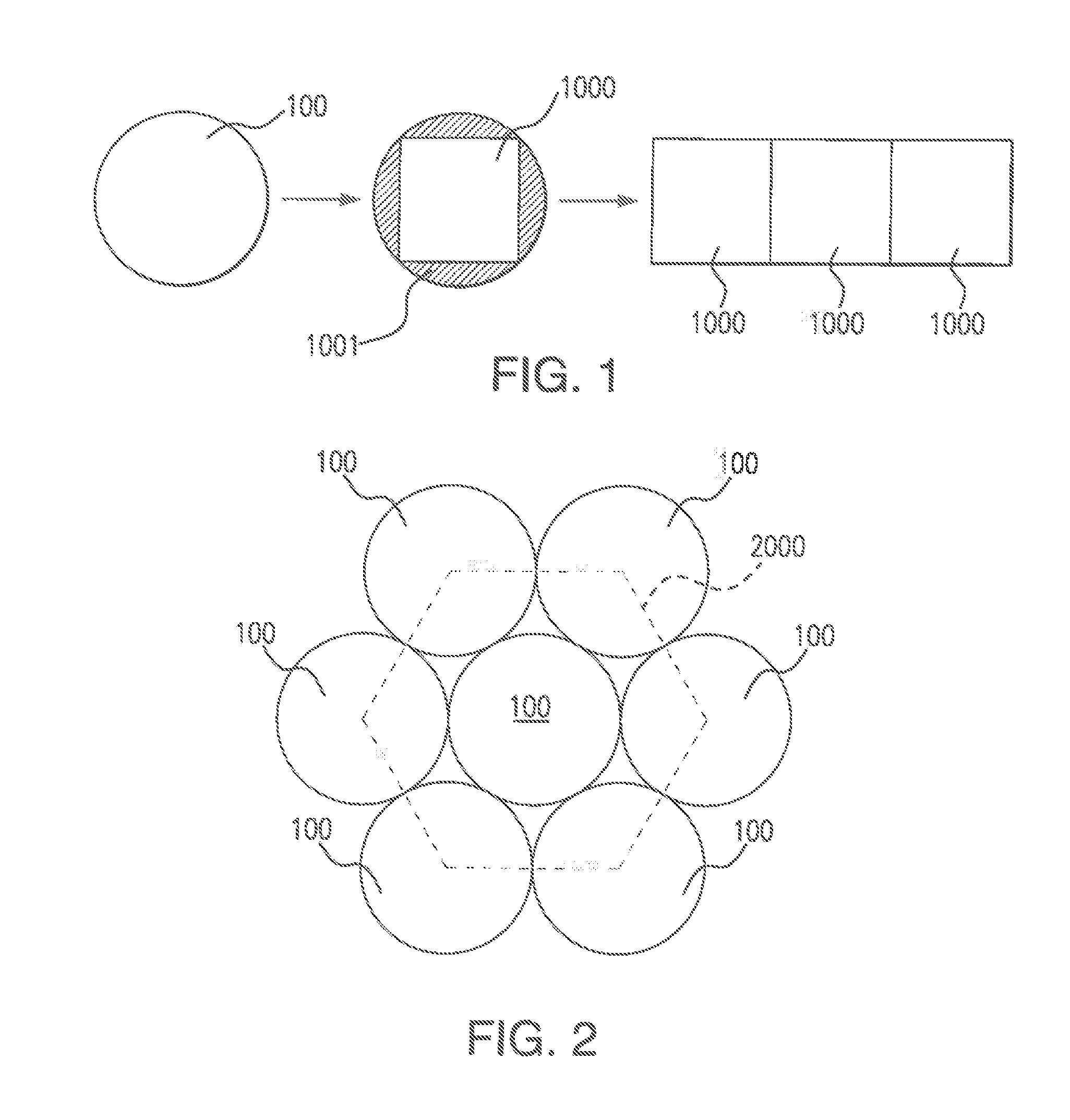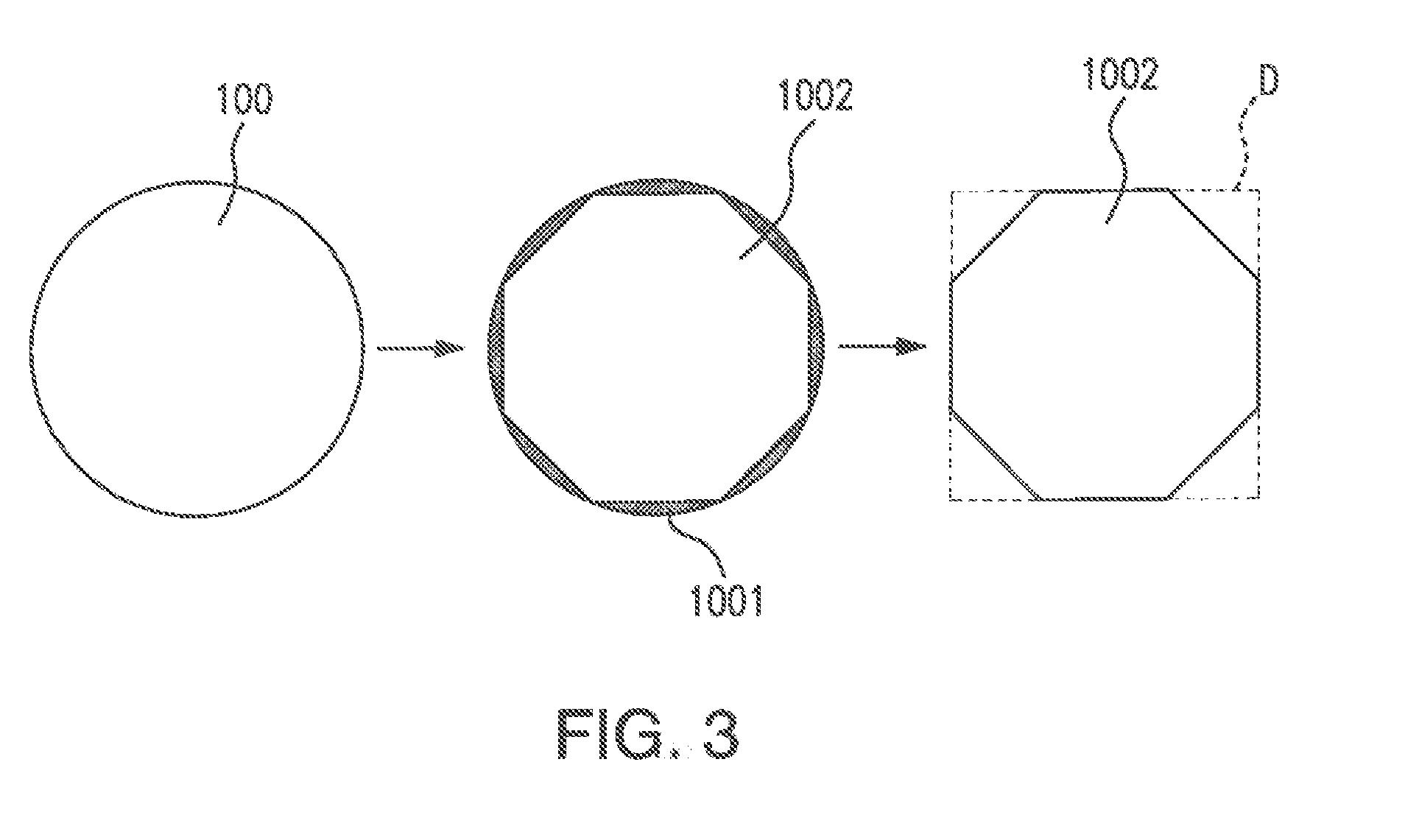Method for producing solar cells and solar cell assemblies
a solar cell and solar cell technology, applied in the field of photovoltaic power devices, can solve the problems of inefficient use of surface on which the solar cell is mounted, inefficient use of available space, and increase the overall cost of the photovoltaic may or panel, so as to achieve high wafer utilization, facilitate combination, and high packing factor
- Summary
- Abstract
- Description
- Claims
- Application Information
AI Technical Summary
Benefits of technology
Problems solved by technology
Method used
Image
Examples
Embodiment Construction
[0081]FIG. 4A schematically illustrates how 4 circular wafer 100 can be subdivided into one relatively large first solar cell 101, in this case having an octagonal shape, and a plurality of relatively small second solar cells 110, each having a substantially triangular shape. FIG. 4B schematically illustrates how the first solar cell 101 and four of the second solar cells 110 can be arranged to form a rectangular subassembly 140, in which the first solar cell 101 and the second solar cells 110 are connected in parallel, by interconnects 120 and 130. Interconnects 130 are arranged for further interconnecting the subassembly in series with another subassembly when forming a solar cell assembly out of the subassemblies. It is clear from FIGS. 4A and 4B that a high wafer utilization is achieved (as wafer material outside the first octagonal solar cell 101 is used for making the further, second, solar cells), and that a subassembly 140 with high packing factor is achieved, namely, with 1...
PUM
 Login to View More
Login to View More Abstract
Description
Claims
Application Information
 Login to View More
Login to View More - R&D
- Intellectual Property
- Life Sciences
- Materials
- Tech Scout
- Unparalleled Data Quality
- Higher Quality Content
- 60% Fewer Hallucinations
Browse by: Latest US Patents, China's latest patents, Technical Efficacy Thesaurus, Application Domain, Technology Topic, Popular Technical Reports.
© 2025 PatSnap. All rights reserved.Legal|Privacy policy|Modern Slavery Act Transparency Statement|Sitemap|About US| Contact US: help@patsnap.com



